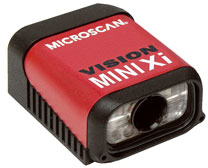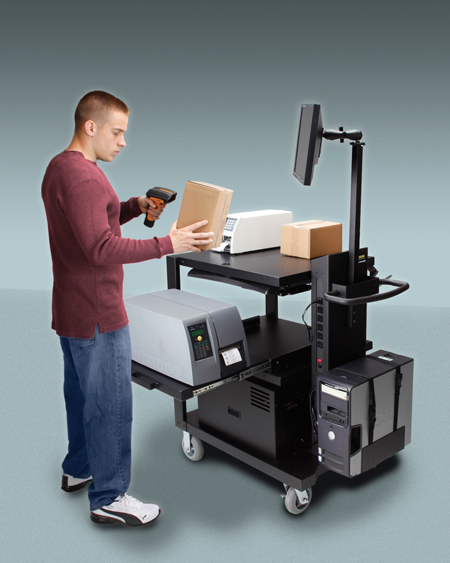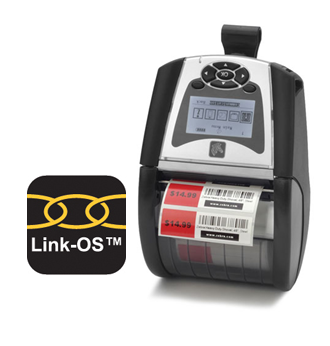5 Ways the Internet of Things Adds Value to Manufacturing and Field Mobility
 Manufacturers and mobile workers are the unsung heroes of invention and innovation. Their creativity builds stronger economies in their organizations, communities and around the world, and their services keep everything moving forward. But the landscape is intricate, and it’s a constant battle to maintain profit margins, revenues and quality of service. With the vast opportunities for waste throughout global manufacturing supply chains, it’s not surprising that enterprises are focusing on cost reduction and ways to improve efficiency and accuracy across their organizations.
Manufacturers and mobile workers are the unsung heroes of invention and innovation. Their creativity builds stronger economies in their organizations, communities and around the world, and their services keep everything moving forward. But the landscape is intricate, and it’s a constant battle to maintain profit margins, revenues and quality of service. With the vast opportunities for waste throughout global manufacturing supply chains, it’s not surprising that enterprises are focusing on cost reduction and ways to improve efficiency and accuracy across their organizations.
With the increase of devices linked to manufacturing and mobility processes comes the increase in data available. However, much of this information is disjointed across the enterprise, making it difficult to obtain a realtime view of assets, people and transactions. When this decentralized scenario is replicated across the enterprise, with countless devices running disparately, inefficiencies continue to mount. This leaves enterprise workers incapable of harnessing value from their data.
Driver Vehicle Inspection Reporting for Private Fleets: Pitfalls and Opportunities
 As time marches on, many of the influences on our businesses change as well. This change alone is a great reason to frequently review your operations and make sure you are employing the very best practices in every facet of your business operations. In a recent research study conducted by Vanson Bourne trucking professionals reported that only 61% of their companies had conducted any type of process re-engineering effort in the previous 12 months. That leaves 39% of transportation operations as a whole (33% of private fleets and 53% of for-hire operations) that have not made a focused effort to innovate and improve their operational processes.
As time marches on, many of the influences on our businesses change as well. This change alone is a great reason to frequently review your operations and make sure you are employing the very best practices in every facet of your business operations. In a recent research study conducted by Vanson Bourne trucking professionals reported that only 61% of their companies had conducted any type of process re-engineering effort in the previous 12 months. That leaves 39% of transportation operations as a whole (33% of private fleets and 53% of for-hire operations) that have not made a focused effort to innovate and improve their operational processes.
When you contrast that static approach to business against constantly evolving regulatory requirements, you have an obvious disconnect. For example, let’s take a topic like commercial vehicle inspections. All commercial fleets perform them since they are required by the Federal Motor Carrier Safety Administration (FMCSA) Compliance, Safety, Accountability (CSA) initiative1 . Yet, how many companies execute these inspections and reports in a manner that not only improves the fleet’s Vehicle Maintenance BASIC score, but also improves the efficiency of the operation, positively impacting everything from driver performance to customer satisfaction?
The Hidden Costs of Using Consumer Grade Mobile Devices for Data Collection
With the widespread use of consumer grade smartphones and tablets, many business have been looking to these types of devices for a variety of applications. While consumer grade devices may be viable solutions in limited environments like Point of Sale, most enterprise applications will find that for the same costs a dedicated ruggedized mobile device will greatly reduce the Total Cost of Ownership (TCO) and improve your ROI.
For more in depth comparison of consumer based devices vs dedicated mobile devices see this previous post as well – How Durable Handheld Computers are Better Suited to the Mobile Workplace than Consumer-grade Smartphones
Virtual Controllers – Controller-like Management without Paying for a Controller
 There is no doubt that the advent of the WLAN controller was one of the greatest advancements ever for wireless networks. But the next best thing is being able to have that functionality without paying for the hardware or licensing!
There is no doubt that the advent of the WLAN controller was one of the greatest advancements ever for wireless networks. But the next best thing is being able to have that functionality without paying for the hardware or licensing!
Wait. What? You can still have zero-touch deployment, central management, and analytics of a wireless network without any additional costs other than the APs? For small networks, YES!
Enter the Virtual Controller! Aruba Networks and Motorola/Symbol Technologies have made this possible for deployments of 25 or less access points. Simply assign one of your Aruba Instant or Symbol/Motorola WiNG5 Access Points as a Virtual Controller and it will automatically adopt new APs as you add them to your network. and configure them for you! While there are some advanced features missing compared to a full controller solution, the bulk of the features are still there to help manage and troubleshoot your network!
The Benefits of Mobile POS for Restaurants
 With restaurateurs searching for new and innovative ways to make their businesses more efficient, many are turning to technology to impact their bottom line. One of the latest technology trends gaining momentum in the restaurant industry is the use of mobile point of sale (POS) solutions. With the increased popularity of wireless networking and the decreased cost of mobile computing devices, such as tablets and smart phones, more businesses are adopting mobile solutions. In the hospitality environment, a mobile POS solution enables wait staff to perform all the basic functionality of your stationary POS system while also adding a few new benefits. A mobile POS solution enables wait staff to greatly improve efficiency by taking orders, busting lines, and processing payments tableside.
With restaurateurs searching for new and innovative ways to make their businesses more efficient, many are turning to technology to impact their bottom line. One of the latest technology trends gaining momentum in the restaurant industry is the use of mobile point of sale (POS) solutions. With the increased popularity of wireless networking and the decreased cost of mobile computing devices, such as tablets and smart phones, more businesses are adopting mobile solutions. In the hospitality environment, a mobile POS solution enables wait staff to perform all the basic functionality of your stationary POS system while also adding a few new benefits. A mobile POS solution enables wait staff to greatly improve efficiency by taking orders, busting lines, and processing payments tableside.
6 Advantages of Ethernet Connectivity for Automated Scanning Applications

When managing the commonly  high speeds involved with automated barcode scanning and vision environments, it’s crucial that your barcode readers can communicate data at the rates that the system and environment require. The type of interface you decide to use on your devices can help or hinder production. Most scanner offer options for RS-232 serial and USB connectivity but Ethernet offers distinct advantages for optimizing efficiency in automated systems.
- Faster data speeds -Â Ethernet connections offer high-speed data transfer that won’t limit production.
- Unlimited connections to the PC -Â With several independent Ethernet connections, PCs can manage multiple tasks in parallel for optimal productivity.
- Unlimited distance from the PC -Â Span greater physical distances without losing data speed and move or centralize PCs away from the production floor.
- Remote device management -Â Control devices anywhere there is a network connection and troubleshoot systems without leaving the office.
- Standardized cables -Â Common connectivity with all Ethernet equipment for no-hassle networking.
- Easy integration to MES and ERP -Â Ethernet-based MES and ERP systems pair naturally with Ethernet devices saving integration time and equipment.
BarTender’s New Label Template for EU No 1169/2011 Allergen Labeling Compliance

Seagull Scientific, manufacturer of BarTender labeling software, has announced that it has released a new label template to help food manufacturers and packagers meet the European labeling requirements scheduled to take effect in December 2014.
EU Regulation No 1169/2011 (Food Information to Consumers, or FIC) identifies 14 major categories of allergen that must be emphasized on a product’s ingredient label. The BarTender FIC label template automatically highlights any of the 14 allergens that appear on an ingredient label, enabling easy compliance with the new regulation.
Newcastle’s Portable Printer Carts for the High Volume Warehouse
 An expansive facility dedicated to shipping and receiving, warehousing, or order fulfillment and distribution continuously looks for ways to improve efficiency and productivity. Positive improvements in these areas can start small and expand outward like ripples in a pond.
An expansive facility dedicated to shipping and receiving, warehousing, or order fulfillment and distribution continuously looks for ways to improve efficiency and productivity. Positive improvements in these areas can start small and expand outward like ripples in a pond.
For companies with warehouse operations at the core, dramatic improvements to efficiency and productivity of the workforce happen by adding portable printer carts. When the carts include portable power supplies, the staff celebrates and productivity can improve 50%.
Rather than having lists, labels, order picks, and inventory data produced at a stationary printing location, the staff works while on the move which reduces unnecessary downtime eliminating wasted steps.
Portable printer carts can be completely customized. Whether you have a high volume operation or you only handle a few printing tasks a day, carts can be designed to fit your existing equipment and easily integrate into your current operation. You won’t have to deal with potential delays or downtime as a new process is put in place. Training is based on common sense and no special skills are required when turning a stationary printer into a mobile one.
Ensure Scanning Flexibility with the 2D Upgradable Honeywell Voyager 1400g

Why should you have to choose between buying a 1D scanner today and risk replacing it with a 2D scanner in a few years, or paying more for a 2D scanner today when you may never need to read 2D? Start out with 1D performance at 1D pricing and upgrade to what you need, when you need it, for much less than purchasing a new scanner.
Built on the platform of Honeywell’s world-renowned Voyager series of hand-held linear scanners, the Voyager 1400g delivers omnidirectional reading of linear bar codes, plus the ability to affordably upgrade the device license to enable PDF and 2D bar code scanning—at the time of purchase or as scanning needs evolve. Performing at speeds that are comparable to laser-based scanners, the versatile and reliable Voyager 1400g can be customized to meet current and future scanning needs, lowering the total cost of ownership.
For assistance finding the right Honeywell scanner for your needs, contact us at Barcodes Inc.
The ABCs of Link-OS
 As part of an effort to help customers make sense of all of the terminology that surrounds Zebra solutions, we are launching a series of posts that will define some key terms – both industry-wide and Zebra-specific – to cut through the clutter. We’re starting with a dictionary of Link-OS terms!
As part of an effort to help customers make sense of all of the terminology that surrounds Zebra solutions, we are launching a series of posts that will define some key terms – both industry-wide and Zebra-specific – to cut through the clutter. We’re starting with a dictionary of Link-OS terms!
You keep hearing that demand is growing for devices that are mobile, intelligent, and connected to the cloud. Did you know that Zebra’s Link-OS Environment was created in response to this demand? The Link-OS Environment is an open platform that pairs an operating system for smart Zebra devices with powerful software apps, making the devices easy to integrate, manage and maintain from any location. With all the functionality comes a lot of new business language!




